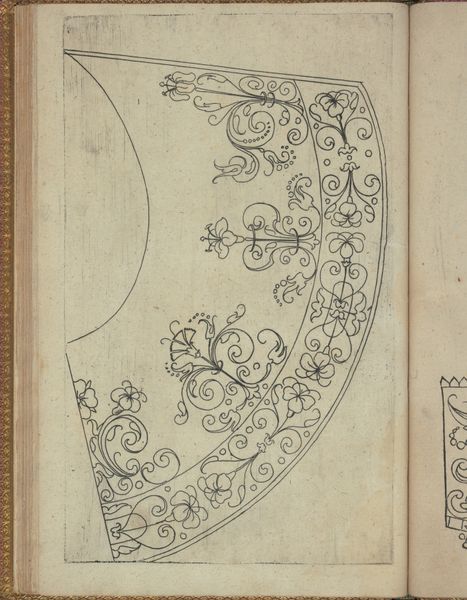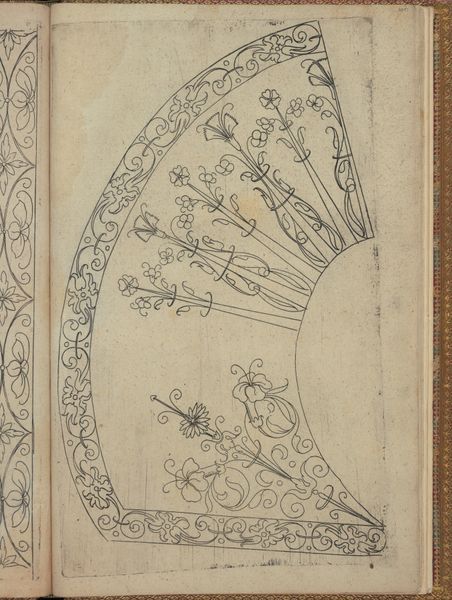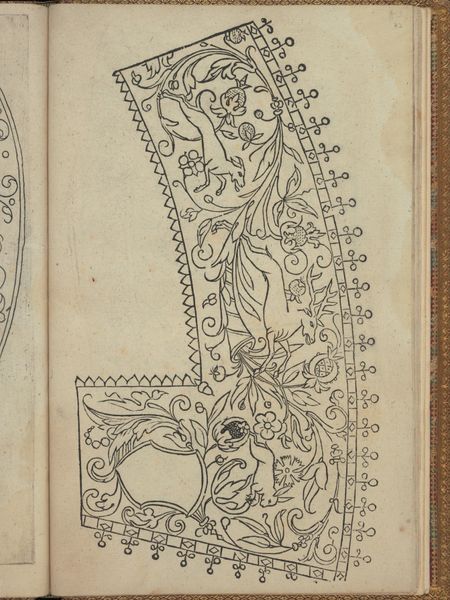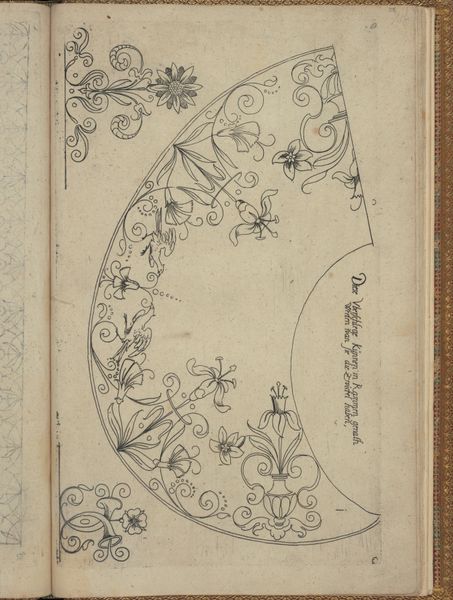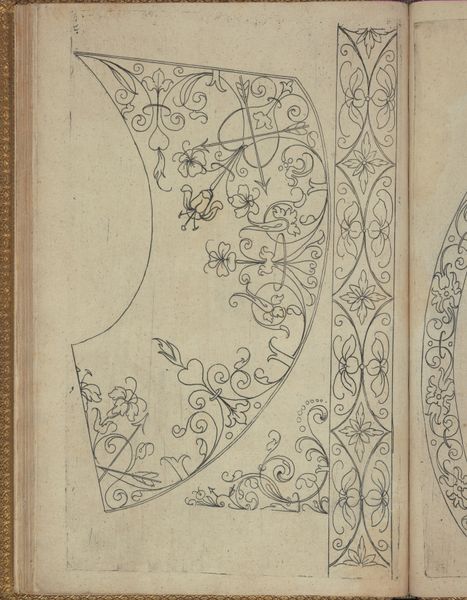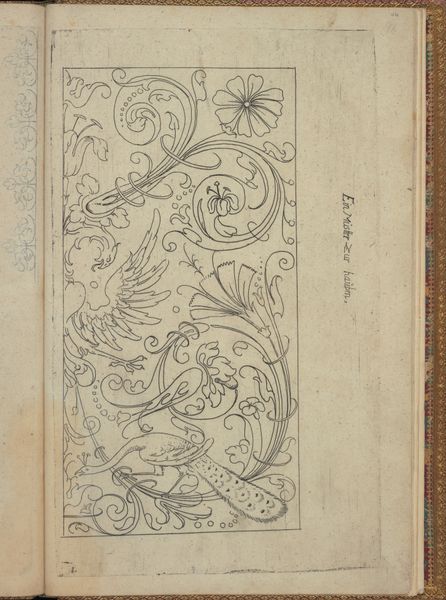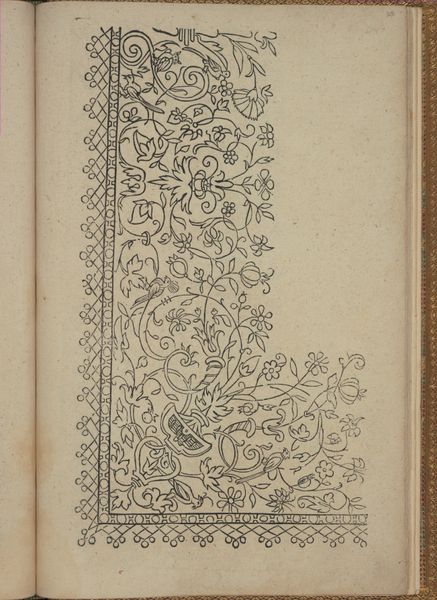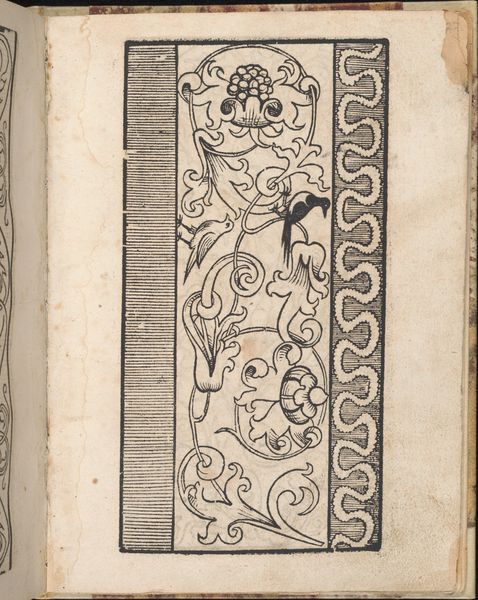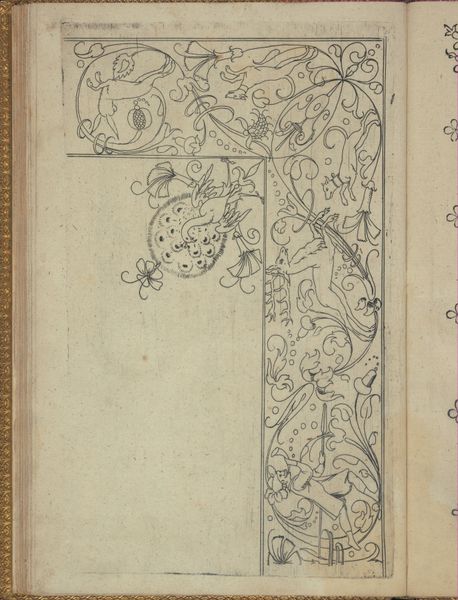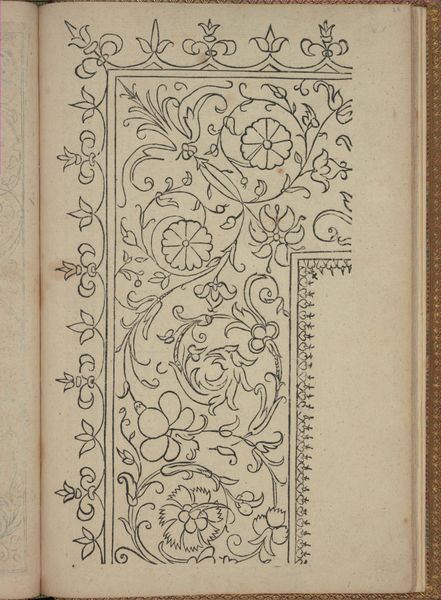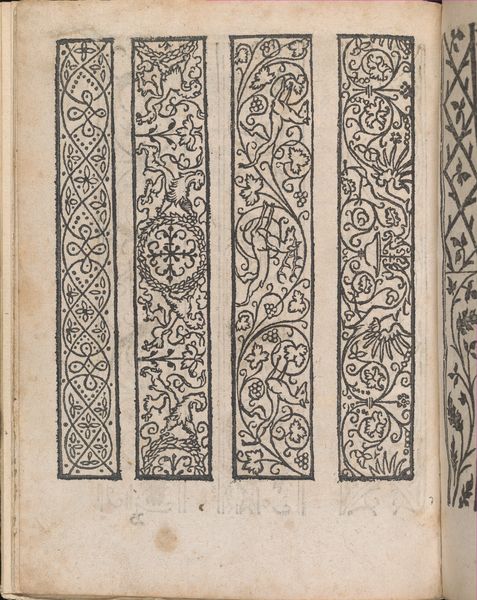
drawing, graphic-art, print, paper, ink
#
drawing
#
graphic-art
# print
#
book
#
mannerism
#
paper
#
11_renaissance
#
ink
#
geometric
Dimensions: Overall: 12 x 8 1/16 in. (30.5 x 20.5 cm)
Copyright: Public Domain
Curator: Let’s turn our attention to a page from Andreas Bretschneider’s "New Modelbüch," specifically page 45r, created around 1615. It’s currently held at the Metropolitan Museum of Art. The work consists of ink drawings on paper, showcasing Bretschneider’s intricate style within the Mannerist tradition. Editor: My first thought? It feels incomplete somehow. Like finding a beautiful, ornate key without a door to unlock. All this elaborate decoration framing...rays? Curator: Precisely! "New Modelbüch" translates to "New Model Book," and these weren’t intended as standalone artworks but rather as pattern templates for artisans. Bretschneider, therefore, occupies an interesting role in art history, blurring the lines between artist and industrial designer, you could say. Editor: Ah, a design catalog! So, the radiating lines aren't necessarily sunshine bursting forth, but maybe guidelines for some object meant to be crafted. It does change how you look at it; knowing the original use provides purpose to its design and creation. I initially thought it would simply create an emotion. Curator: Exactly. Its function is interwoven with the social role of art in the Renaissance. Works like this circulated within workshops and guilds, contributing to the visual culture and commerce of the era. Editor: It's funny, seeing this today. I'm reminded of adult coloring books – the same impulse, maybe? That satisfaction of taking someone else's intricate outline and filling it with your own vision? Curator: In a way, yes! The act of filling these patterns wasn't purely mechanical; artisans would interpret and adapt the designs, injecting their own creativity. In a sense this ensured certain conformity in the products sold. Editor: Looking closer, it’s incredible how dense the floral motifs are. I keep searching the spaces inside those swirling lines, those perfect curves. I think I need to examine those patterns more in my daily life and artwork! Curator: The level of detail is remarkable, given its function. It also showcases the value placed on craftsmanship and ornamentation at the time. Something potentially to revive one day with all that craftsmanship skill people tend to forget. Editor: Knowing the book's intended purpose, it resonates differently with me. It’s a peek into a world where art served a practical, communal purpose, enriching both the artist and those who then interacted with it. I feel my current perspective may have grown! Curator: Absolutely. It underscores the multifaceted roles art can play in society, informing not only aesthetics but also economy, technology, and education, as well as helping those craftworkers be inspired.
Comments
No comments
Be the first to comment and join the conversation on the ultimate creative platform.
